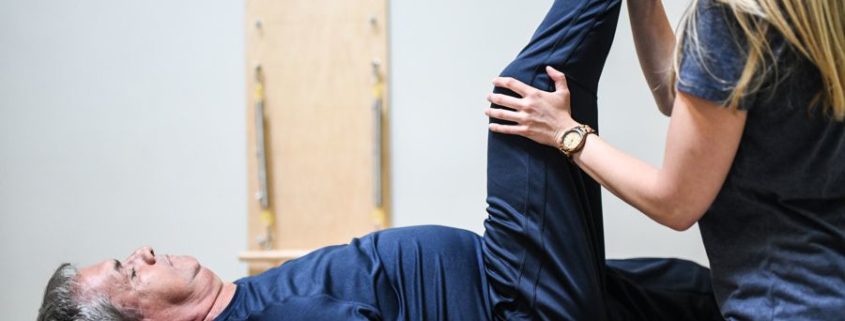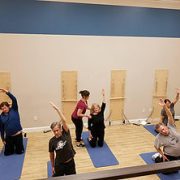Tight Hip Flexors? When Stretching isn’t Enough…
When it comes to feeling stiff and immobile, tight hip flexors are the second most common complaint I hear – right after tight hamstrings.
Tight hip flexors are annoying, achy, and they often contribute to lower back pain. When your hips are tight, it can be painful or uncomfortable to walk, run, play golf, exercise, and even stand up straight!
Typically, the recommended treatments for this problem include lots of stretching, foam rolling, massage, and myofascial release.
But what if the stretching and all that other stuff doesn’t work?
What if no matter how often you stretch, the tightness just keeps coming back?
Sometimes – actually often – the tightness you feel in your hip flexors (or any other muscle group for that matter) can be due to weakness or overworking of the muscle.
If this is your problem, then no amount of stretching or foam rolling is going to help you.
Stretching and foam rolling will help to temporarily ease the stiffness from an overworking muscle, but it will only be a bandaid until you tackle the root cause.
You need to first identify WHY these muscles are weak or overworking, and THEN figure out the proper exercise and load that will help turn your hip flexors from feeling tight and overworked – to flexible and mobile.
Your hip flexors consist of the muscle group located in the front of your hip in the area of your groin. They are responsible for flexing or bending your thigh up and toward your chest. But they also play a role in stabilizing your pelvis and lower back… and this is where we see a lot of problems and confusion.
The rectus femoris, part of your quadriceps muscle group, and your psoas, part of your deep abdominal muscle group, are the two major hip flexors. Your rectus muscle is the one primarily responsible for lifting your thigh. When you are walking or running, and repetitively flexing your leg, this is the muscle you are using.
Your psoas, on the other hand, is much shorter and actually attaches to your lumbar spine. Because of this, it has more of a stability role. When functioning properly, it will assist in exercises like the crunch or sit up, and it helps to stabilize your pelvis during any of these movements as well as when you are standing upright. Your psoas, abdominals, and glute muscles all have to work together in harmony for you to have good posture.
Let’s talk about the psoas for a moment… because this is where many folks I speak with are misinformed.
The psoas gets blamed for a lot of things – most notably – tilting your pelvis forward and being the cause of low back pain. The theory is that if you stretch, massage, and “release” your psoas muscle – then you will balance out your pelvis and your back pain will disappear.
Sadly – this is rarely the case.
Most of the time, your psoas feels tight because it’s either too weak and not able to keep up with what it’s being tasked to do… or… it’s overworking to compensate for your deep abdominals not working properly.
Either way – the result will be an angry psoas that retaliates against you by feeling tight and achy.
I’m working with a client right now with this exact problem.
When she stands, she has a huge curve in her spine and her pelvis is tilted forward. She has back pain and a very tight hip.
When she stretches her hip it feels really good… but the relief is only temporary. And lately, her hip has started to feel painful when she works out. The problem is that her abdominals don’t “turn on” properly when she is exercising – her psoas is taking over and doing all the work. What we need to do is target her glutes and hamstrings to help balance out her pelvis, and perform some very specific corrective exercises to get her deep core engaged… and psoas relaxed.
Her pelvis is sinking forward not because her hip flexors are tight, but because the rest of her abdominals aren’t engaged enough to pull her pelvis up and stabilize it.
This is a posture she has gotten used to… and wasn’t even aware of. She felt immediately better after some proper strengthening took the load off her psoas – and she quickly realized why all the stretching she had been doing up until this point wasn’t helping.
If you’ve got tight hip flexors and your current stretching regimen isn’t working – it’s possible that it could be due to a weak, under-functioning core.
But if that’s the case, you’re in luck… because we can evaluate that for you for FREE! Just click here to sign up for a free 30 minute Discovery Session with one of our specialists.










